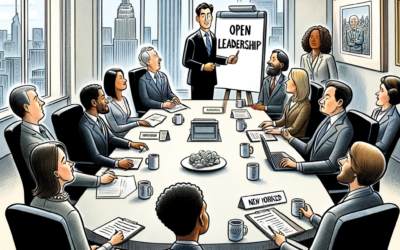
As leaders, we constantly navigate a sea of information, making split-second decisions that impact our teams and organizations. But did you know that your brain has a natural tendency to crave prediction, seeking patterns and associations in every sensory input? This inherent trait, while essential for processing vast amounts of information, can sometimes lead us astray in your leadership decision making processes.
The Predictive Nature of Our Brains
Our brains are wired to complete patterns and make associations, a trait that’s evident when we find ourselves finishing someone’s sentences, either out loud or in our heads. This mechanism extends to all forms of sensory input. Without it, we’d struggle to categorize and remember new information. However, this becomes particularly challenging when learning new subjects with no familiar context, making it hard to retain this information.
The Leadership Challenge: Navigating Cognitive Biases
The challenge for leaders lies in recognizing how this predictive nature can influence y ou in your leadership decision making. Over time, as we continually predict and file away sensory data in invariant pattern associations, the likelihood of constructing an accurate narrative diminishes. Yet, paradoxically, we tend to staunchly defend these narratives, often mistaking them for absolute truths. The stronger our conviction in these narratives, the more they skew our perception of reality.
Insights from Keegan and Lahey’s Research on Cognitive Development
Keegan and Lahey’s research sheds light on this phenomenon by outlining three stages of cognitive development that will support you in your leadership decision making:
- Social Adaptation: Initially, we view the world through a lens of social adaptation, seeking ways to fit in with our surroundings.
- Value Diversity: As we evolve, we recognize that there are multiple worldviews and that adapting to others’ values or ways of being isn’t always necessary for social harmony.
- Metacognition: The pinnacle of cognitive development is achieving metacognition, where we’re not only aware of our filtering mechanisms but can also consciously choose and alter these filters to align with our goals.
Applying This Insight to Leadership
As leaders, understanding and navigating these cognitive stages is crucial. By recognizing our brain’s propensity for pattern-making and narrative construction, we can begin to question our assumptions and narratives. This awareness allows us to break free from the constraints of our constructed narratives, enabling more flexible and adaptive decision-making. Moreover, by understanding the different stages of cognitive development, leaders can better relate to their team members, appreciating their unique perspectives and fostering a more inclusive and dynamic decision-making process.
Conclusion: Embracing Cognitive Flexibility for Better Leadership
In conclusion, by understanding our brain’s craving for prediction and the potential pitfalls it presents, leaders can cultivate a more nuanced approach to decision-making. This involves being mindful of our cognitive biases, embracing cognitive flexibility, and fostering an environment where diverse perspectives are valued and considered. By doing so, leaders not only enhance their decision-making capabilities but also create a more adaptive, resilient, and innovative organizational culture.


